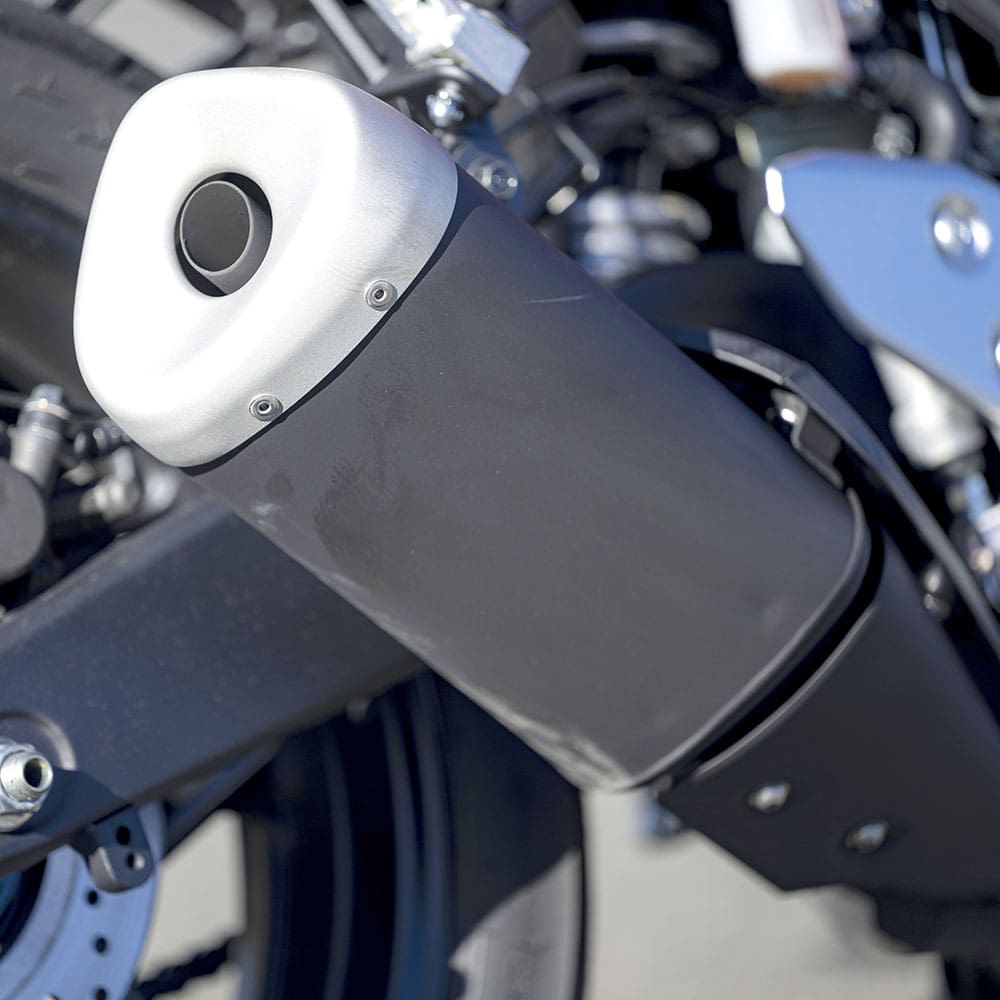Four years after its 2015 launch, Yamaha decided that its YZF-R3 needed a serious freshen up and so in 2019 the pint-sized sportsbike scored a new YZR-M1-inspired look, a revised riding position and a heavily upgraded suspension package. Mechanically, the Yamaha R3 remained pretty much the same, and that’s how it still remains to this day, with occasional updates mainly limited to new colour schemes.

For 2022, the YZF-R3 is available in Icon Blue, Midnight Black and Vivid Orange (as tested), and it still looks fantastic with its central air intake and sharp bodywork that not only mimics Yamaha’s MotoGP machine but also its bigger siblings, the YZF-R1, R7 and R6 models. The 2019 body upgrades brought with them more rider knee room, a lower fuel tank cover for easier tuck in and a lower handlebar, as well as an improved aero package that reduced drag for a claimed 8km/h higher top speed, all changes no doubt aimed at improving racetrack performance. The Yamaha R3 is, after all, a major contender in Supersport 300 racing around the world, including here in Australia.
It’s little surprise then that the YZF-R3’s 321cc parallel-twin is tuned for the track with top-end performance taking priority over low-rpm tractability, but even on the road that’s no bad thing as long as you’re willing to spend most of your time high up in the rev range. The twin punches out a claimed 30.9kW of power at 10,700rpm and the torque peak of 26.9Nm comes in at a lofty 9000rpm, so you really have to keep it on the boil to get the best out of it, but working your way through the smooth-shifting six-speed gearbox to keep the tacho hovering near the redline is great fun, as is diving into corners with seemingly way too much corner speed, all in an effort to maintain your hard-won momentum.
Fortunately, the Yamaha R3 offers razor-sharp handling, so carving corners is not a problem on this lightweight sporty. Weighing in at just 167kg wet and wearing a relatively narrow 140-section rear tyre, barely think about tipping into corners and the R3 is already banked over and into them. And once there, it offers decent ground clearance, holds a line nicely and is then super easy to flick over on to the other side.
The front-end inspires plenty of confidence when braking deep into corners and the R3’s single 298mm disc gripped by a twin-piston caliper offers plenty of stopping power and good feel at the non-adjustable lever.
Beneath the bodywork, the Yamaha R3 runs a rigid steel tube diamond-type frame, which used the engine as a stressed member through a combination of fixed mounts and rubber mounts, the latter to help tune out vibrations. The KYB suspension consists of a non-adjustable 37mm USD fork and a monoshock with preload adjustment, and I found the set-up well suited to my 78kg, with controlled dive under braking and a compliant rear-end over bumps.

I also found the low 780mm seat height and narrow body well suited to my short legs, and with plenty of space to move about on the bike it should suit taller riders too. The digital dash offers plenty of useful info but in this day and age of bright and colourful TFT screens the little LCD display looks dated. Nevertheless, the basics are easy enough to read like speed, engine revs, gear position, fuel level, engine temperature and clock.
The YZF-R3 is competitively priced at $8199 ride away, and while it may not quite have the punch of some larger-capacity machines in its class (Ninja 400 or RC390), it has still proven competitive on track, and it’s still an absolute hoot to ride on the road.
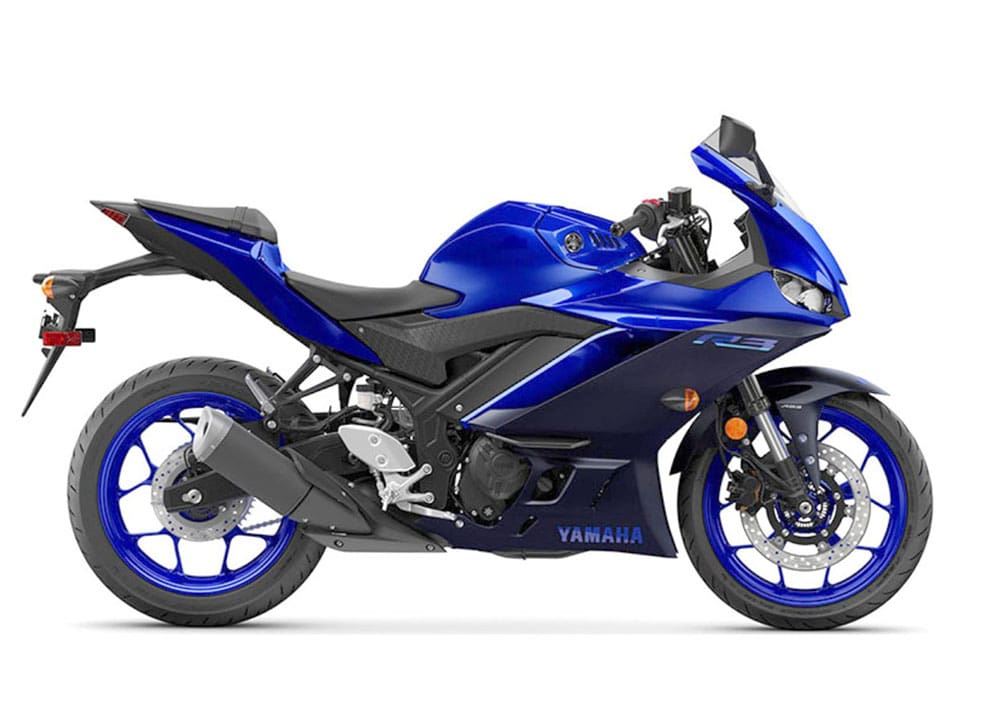
SPECS
Engine
Capacity: 321cc
Type: Parallel-twin, DOHC, four valves per cylinder
Bore & stroke: 68 x 44.1mm
Compression ratio: 11.2:1
Cooling: Liquid
Fueling: 2 x 32mm Mikuni throttle bodies
Transmission: Six-speed
Clutch: Wet, multi-plate, slipper type
Final drive: Chain
Performance
Power: 30.9kW @ 10,700rpm (claimed)
Torque: 26.9Nm @ 9000rpm (claimed)
Top speed: 140km/h (est)
Fuel consumption: 3.5L/100km (measured)
Electronics
Type: NA
Rider aids: ABS
Rider modes: NA
Chassis
Frame material: Tubular steel
Frame type: Diamond
Rake: 25°
Trail: 95mm
Wheelbase: 1380mm
Suspension
Type KYB
Front: 37mm USD fork, non-adjustable 130mm travel
Rear: Monoshock, adjustable preload, 45mm travel
Wheels and Brakes
Wheels Cast aluminium
Front: 17 x 2.5 Rear: 17 x 4
Tyres Dunlop Sportmax GPR-300 (as tested)
Front: 110/70-17 (58W)
Rear: 140/70R17 (75W)
Brakes Front: 298mm disc, two-piston radial caliper
Brakes Rear: 220mm disc, single-piston caliper
Dimensions
Weight: 167kg (wet, claimed)
Seat height: 780mm
Width: 720mm
Height: 1140mm
Length: 2090mm
Ground clearance: 160mm
Fuel capacity: 14L
Service and Warranty
First: 1000km
Minor: 5000km
Major: 10,000km
Warranty: Two years, unlimited km
Business end
Price: $8199 (ride away)
Colour options: Midnight Black, Vivid Orange and Icon Blue
Contact
![]()
Competition
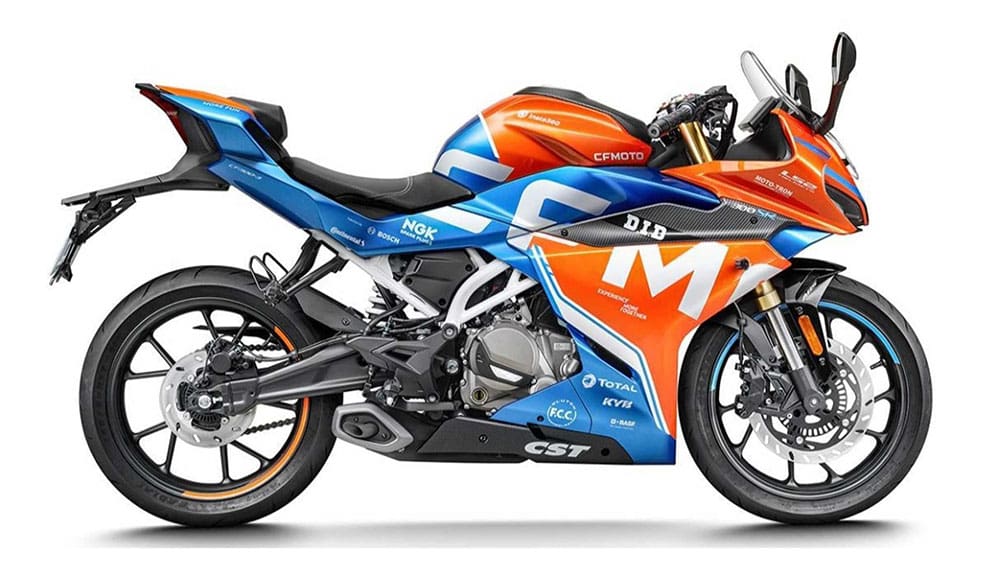
CFMoto 300SR
Power: 21.4kW at 8750rpm
Torque: 25.3Nm at 7250rpm
Weight: 165kg (wet)
Price: $6290 (ride away)
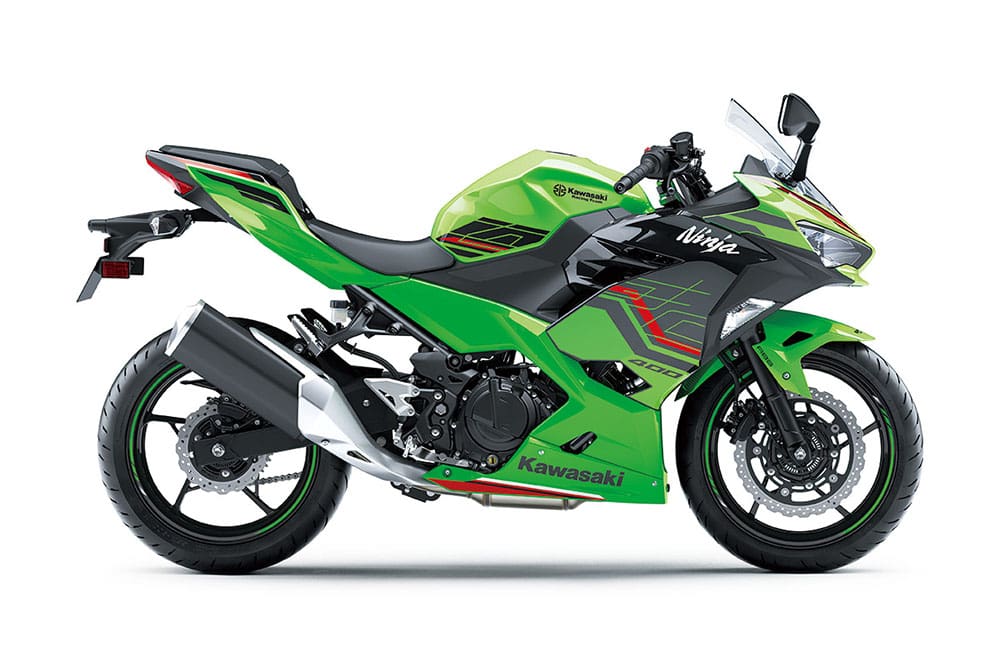
Kawasaki Ninja 400
Power: 35kW at 10,000rpm
Torque: 37Nm at 8000rpm
Weight: 168kg (kerb)
Price: $7344 (plus on-road costs)
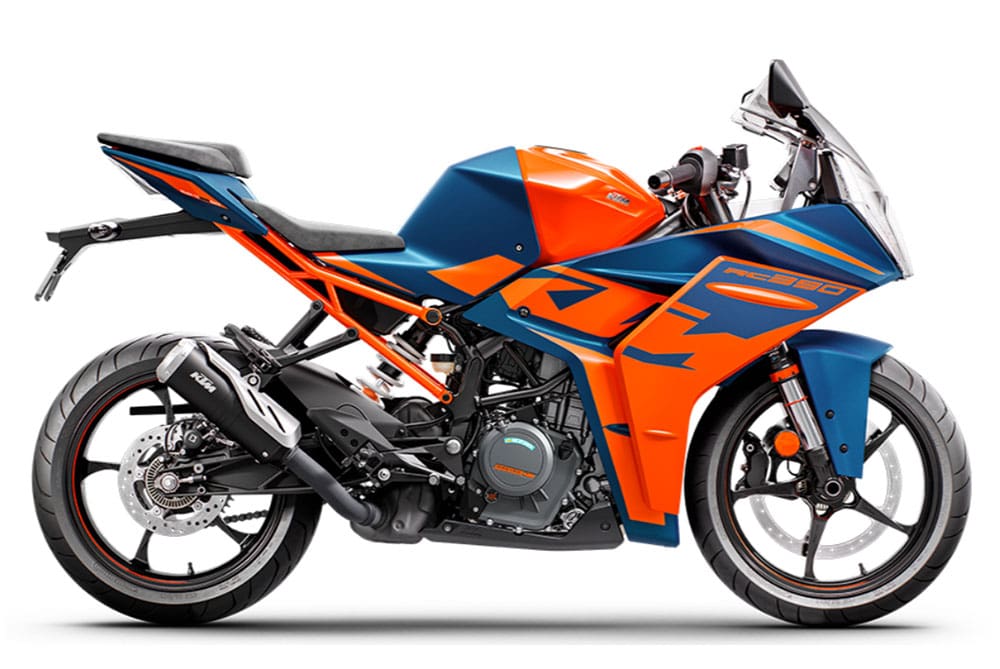
KTM RC390
Power: 32kW at 9500rpm
Torque: 37Nm at 7000rpm
Weight: 158kg (dry)
Price: $8399 (ride away)

